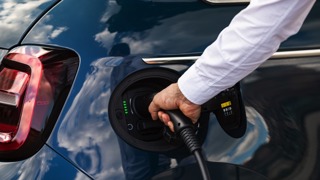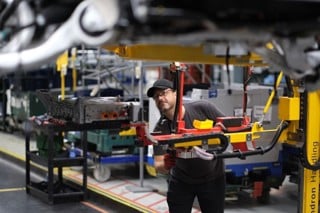A Worldwide Harmonised Light Vehicle Test Procedure (WLTP) will replace the New European Driving Cycle (NEDC) after plans to change the test were revealed a year ago.
The United Nations Economic Commission for Europe (UNECE) is developing a new testing regime to establish more accurate CO2 emissions and fuel economy rates.
It is proposing a series of changes in an effort to get closer to real-world figures, according to Dr Peter Monk, who is senior researcher for the International Council on Clean Transportation and helping to draw up the new regulations. They will include a longer test cycle, rising from 20 to 30 minutes, and a higher top speed of around 80mph.
But a proposal to reduce the test temperature to 10°C – the current test temperature of 20-30°C helps keep fuel consumption and CO2 emissions to a minimum – has not been accepted. The new WLTP is expected to be confirmed by 2013/14 and Monk says that the European Union will have the opportunity to tweak it further. However, he doesn’t envisage the new test cycle will be introduced until 2020.
Fleets have long been aware of a gulf between official combined fuel consumption figures on which many running cost calculations are based, and the fuel consumption achieved by company car drivers on the road. Many have expressed concerns that the difference between the two has widened with the introduction of more fuel-efficient vehicles.
According to the Society of Motor Manufacturers and Traders (SMMT), fleets should never expect to achieve the fuel economy figures advertised by carmakers.
The admission is sure to rile many company car drivers who have grown increasingly frustrated at the lack of accuracy compared to what they achieve in the real world.
Paul Everitt, chief executive of the SMMT, said: “The published data was never intended to provide each individual with an indication of what miles per gallon they would achieve.
“What it seeks to provide, and this is why the European Commission and governments require us to publish it, is some sort of comparative guidance.”
He told delegates at the Low Carbon Vehicle Partnership’s annual conference that figures were based on “an average, of an average of the worst possible average”.
He said: “It’s trying to represent conditions, not just in terms of individual drivers, but individual driving conditions, not just in part of Europe, but in the whole of Europe and that clearly will never accurately provide person-by-person data.”
The current testing regime is conducted in a laboratory at between 20-30°C on a rolling road; no vehicle pre-warming is allowed and an electrical machine simulates wind resistance and vehicle inertia.
Air-conditioning, lights, radio and other electrical equipment are all switched off, which helps keep fuel consumption and CO2 emissions to a minimum.
The urban test involves accelerating and slowing down several times, steady speeds and engine idling and covers two-and-a-half miles at an average speed of 9mph and a maximum of 31mph.
The extra-urban test involves 50% steady-speed driving, plus some acceleration and slowing down and engine idling. It covers 4.3 miles at an average speed of 39mph and a maximum of 75mph. The official combined figure is an average resulting from the urban and extra-urban tests, weighted by the distances covered. However, the car doesn’t go anywhere near a road.
As the WLTP will apply only to new vehicles, fleets will not find existing vehicles being shifted into a higher tax bracket overnight.
Everitt recognises the industry can do more now to help fleets select the right vehicles. He said: “I think where we, as an industry, have a clear obligation is to ensure that in the choosing process we are providing better information around what mix of technologies are going to better meet the needs of individual drivers and driving styles.
“However, we cannot give a number you will hit day-in day-out. That’s just not reasonable.”






















GrumpyOldMen - 28/05/2012 10:58
I disagree. I think it's a perfectly reasonable request. You're trying to sell me the new Fairy, which comes in a smaller bottle but is concentrated, so it goes much further than the old bottle, though you can't give me any figures to back it up. I don't mind that for a £2 bottle of washing up liquid but you're asking us to swallow the same argument for a £20000 car. I think motor manufacturers can try a bit harder than that. I'm not after a pyrrhic victory, I just want to be able to do a budget that doesn't begin "Once upon a time...". 20-30 degrees and no aircon. Yeah right. PS: Some drivers did more washing up with the old bottle than they do with the new one. Progress?